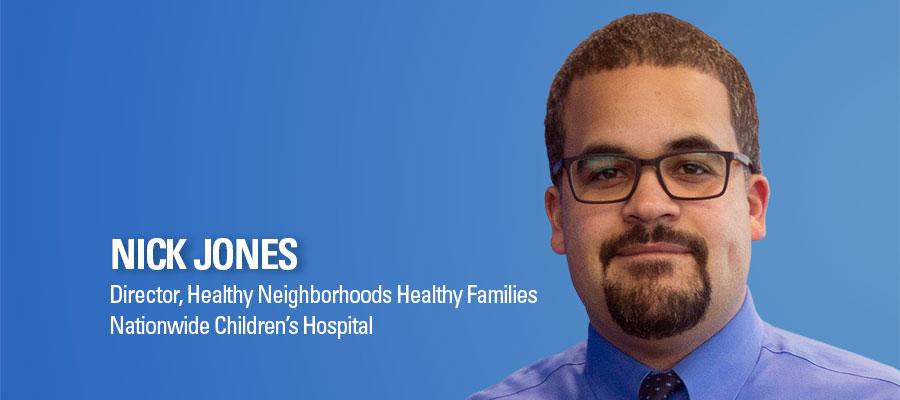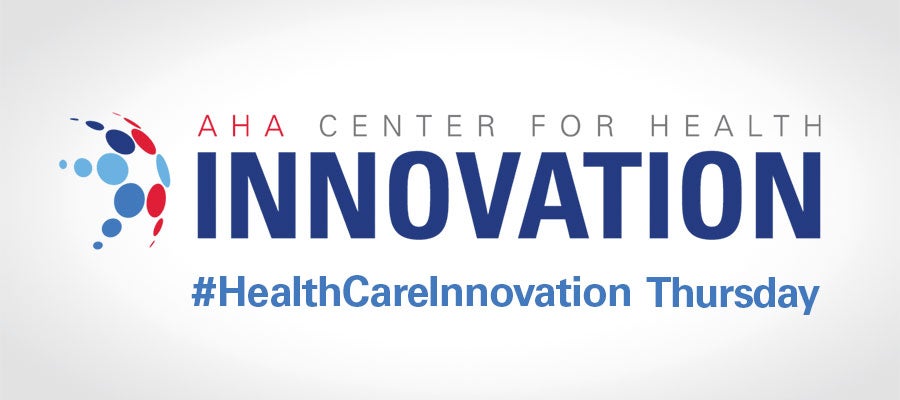How an Ohio Children’s Hospital Built Trust, Fulfilled Promises — and Improved Housing and Health in Its Communities


Nationwide Children’s Hospital is now implementing what we believe is a truly neighborhood-driven and co-designed community investment initiative in Columbus, Ohio. Our planning process allowed us to partner with residents and hold the hospital accountable to the community’s needs and wants. We have incorporated an already-existing area revitalization plan guided by the community and championed by city officials.
It has not always been this way. Nationwide Children’s Hospital has not always been a good neighbor.
But we have come to realize in the nearly 15 years of our Healthy Neighborhoods Healthy Families community investment initiative — especially as we have expanded in the last two years — that we cannot fully care for a community until we earn their trust.
Initial Efforts to Be a ‘Good Neighbor’
Our history has shown us that any hospital wanting to invest in the community needs an engagement strategy to listen to the residents, build that trust and make the residents’ goals the hospital’s goals as well.
Healthy Neighborhoods Healthy Families began in 2008 as Nationwide Children’s was expanding its footprint on the South Side of Columbus, more than doubling the hospital’s size. Years prior, we adopted a “Good Neighbor Agreement,” a pledge to share our plans and ideas regularly and listen to the feedback of a dozen neighborhood civic associations and commissions representing the areas near our main campus.
The agreement was the hospital’s first significant, ongoing process of community engagement. It also showed us how far we had to go. Our neighbors felt they had not benefited from the proximity of a large children’s hospital, and beyond that, they worried continued growth could disrupt their neighborhoods. On our end, we came to better understand the challenges our neighbors faced, particularly a lack of high-quality affordable housing.
Our history has shown us that any hospital wanting to invest in the community needs an engagement strategy to listen to the residents, build that trust and make the residents’ goals the hospital’s goals as well.
The hospital’s board of directors and senior executives decided to do more to invest in the community — but we needed the support of a community partner that could help us continue to build trust. So our efforts largely flowed through a faith-based organization that had long-earned credibility in the South Side, Community Development for All People.
Together, we collaborated to create Healthy Homes, the affordable housing arm of Healthy Neighborhoods Healthy Families, to improve housing. Almost 15 years later, we have drawn investments of more than $50 million to the community, creating or improving more than 500 high-quality, affordable homes. Our mission at Healthy Neighborhoods Healthy Families also has expanded to include workforce development, financial counseling, educational support and other programs.
New Strategy to Better Collaborate, Build Trust and Fulfill Promises
That community engagement strategy was successful for the South Side and has continued to lead to constructive feedback and dialogue. Our strategy needed to change when we decided to bring Healthy Neighborhoods Healthy Families to Linden, another neighborhood in Columbus, about two years ago.
Although Nationwide Children’s has a primary care center in Linden, our main campus is not there. Linden residents had heard other promises of revitalization for decades, only to be disappointed. If Nationwide Children’s was going to bring Healthy Neighborhoods Healthy Families there, the community had to trust Nationwide Children’s first.
The city of Columbus had led a Linden revitalization planning process with residents, which gave us an idea of their biggest concerns. But we had to go to the residents directly as well to understand their lived experiences.
We worked with a community organization called Cohear for help connecting with the Linden community. Cohear organized a series of meetings among senior hospital representatives and Linden residents. The residents who participated were not only community “leaders” but also single parents, middle and high school students and others not normally at the table.
A third-party facilitator was crucial to this process because it reconfigured any perceived power dynamics. Nationwide Children’s representatives were not the hosts but instead were equal participants with Linden residents. The hospital and community members who participated in the discussion groups presented their findings together. While our South Side efforts had a huge focus on housing for years, Linden residents let us know they were just as interested in securing jobs, improving their children’s educational outcomes and participating in many other programs.
So we started to work in Linden. In 2021, the first year that Healthy Neighborhoods Healthy Families was involved, the initiative built or improved 35 homes. The hospital hired 100 Linden residents through workforce development programs. Many community partners came together to open a free food store and a charitable pharmacy. One year later, the most frequent feedback we hear is relief — and some surprise — that Nationwide Children’s has done what it said it would.
Lessons Learned After Two Decades of Community Investment for Health
We have learned a lot in the last two decades of community investment. Among the most important points:
- Let community members be the guides. It sounds obvious, but many organizations who are committing money want total control. A fully collaborative, shared process can sound risky, but it’s more likely to succeed.
- Understand the daily, lived challenges the community faces. An anchor health care organization may have data, but it needs to hear from the people. More than once, Healthy Neighborhoods Healthy Families has changed priorities based on people’s lived experience.
- Invest organizational resources — not only money, but also staff, time and talent. A community that sees a hospital’s team in the neighborhood listening to feedback, answering questions and working hard, is more likely to work with you and support you.
Nationwide Children’s is still learning, and we understand that building trust is a continuing process. But we are working to be the neighbor that our communities need.
This blog is part of a series on how hospitals and health systems are adopting the anchor mission strategy of place-based or community investing to improve the health of their communities. Visit AHA.org/communityinvestment to view additional resources produced and curated on this topic.
Nick Jones is director, Healthy Neighborhoods Healthy Families, at Nationwide Children’s Hospital in Columbus, Ohio.

